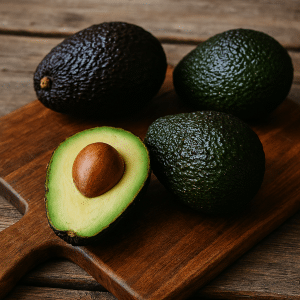Walk past the bison section at your grocery store, and you’re missing out on nature’s ultimate protein upgrade.
This powerhouse meat packs 22 grams of lean protein per serving while delivering fewer calories than beef, but most shoppers don’t even know it exists.
Here’s what makes bison special: it’s naturally grass-fed, hormone-free, and loaded with iron that’ll boost your energy better than any supplement. Plus, it tastes incredible with a clean, slightly sweet flavor that puts regular beef to shame.
Ready to find out why athletes and health enthusiasts are switching to bison?
This guide breaks down everything from calories to cooking tips, proving why this lean red meat deserves a spot on your dinner table.
What Makes Bison Meat Stand Out Nutritionally?
Bison meat stands out nutritionally for being leaner than both beef and chicken, with significantly less fat and fewer calories per serving.
It’s also rich in iron, which supports energy levels and promotes healthy blood flow, making it especially beneficial for athletes and individuals with iron deficiencies.
High in quality protein, bison supports muscle growth and recovery without the added fat. Its clean, slightly sweet flavor and naturally grass-fed profile appeal to health-conscious eaters, especially those following paleo or keto diets.
With no added hormones and a nutrient-dense profile, bison is a smart, flavorful choice for a healthier meat option.
How Many Calories Are in Bison Meat?

On average, a 3-oz (85-g) serving of cooked ground bison contains about 152 calories. Here’s how that compares to other popular meats:
| Meat Type | Calories (3 oz cooked) | Notes |
|---|---|---|
| Bison | 152 | Lean cut, high protein, low fat |
| Beef (85% lean) | 215 | Higher fat content |
| Chicken Thigh (skinless) | 180 | Moderate fat, slightly higher calories |
What Affects Calorie Content?
- Cut of Meat: Leaner cuts (like bison sirloin) have fewer calories than fattier ones.
- Cooking Method: Grilling or broiling keeps calories lower than frying or sautéing with oil.
- Fat Content: The less marbling or added fat, the lower the calorie count.
Choosing lean bison and cooking it helps keep your meals lighter and more nutrient-dense.
Bison Meat Macronutrients: Protein, Fat, & Carbs
Bison meat delivers a well-balanced macronutrient profile that suits a wide range of diets. It’s rich in protein, lower in fat than beef, and naturally carb-free when fresh.
| Macronutrient | Amount (per 3 oz cooked) | Nutritional Benefit | Comparison/Note |
|---|---|---|---|
| Protein | 22 grams | Supports muscle growth, metabolism, and keeps you feeling full | Higher protein density than many other red meats |
| Total Fat | 7 grams | Provides energy, essential for nutrient absorption | Lower total fat than beef |
| Saturated Fat | 3 grams | Should be consumed in moderation | Less saturated fat than typical beef cuts |
| Carbohydrates | 0 grams (fresh meat) | Ideal for low-carb and keto diets | May increase slightly in processed or flavored bison products |
Vitamins and Minerals in Bison Meat

Bison meat is loaded with essential vitamins and minerals that help energize your body, support your immune system, and boost overall wellness. Below are the top micronutrients that make bison a nutritious standout:
1. Iron (Heme Iron)
- Role: Supports oxygen transport and helps produce healthy red blood cells.
- Benefits: Helps combat fatigue and supports energy, especially important for active individuals and women.
- Comparison: Higher than chicken and often slightly higher or comparable to beef in heme iron content.
2. Zinc
- Role: Essential for immune health, wound healing, and enzyme function.
- Benefits: Helps your body fight off illness and repair itself efficiently.
- Comparison: Similar levels to beef, but noticeably higher than chicken.
3. Vitamin B12
- Role: Vital for nerve function, brain health, and energy metabolism.
- Benefits: Supports mental clarity, mood balance, and long-lasting energy.
- Comparison: Richer than chicken and comparable to beef in B12 content.
4. Selenium
- Role: Functions as an antioxidant and supports thyroid health.
- Benefits: Protects cells from damage and supports hormone balance.
- Comparison: Present in similar levels as beef, but typically higher than chicken.
What are the Health Benefits of Eating Bison?
Bison contains less saturated fat and cholesterol than beef, making it a heart-smart meat choice. Its lean profile supports healthy blood pressure and reduces the risk of cardiovascular issues.
With high protein and fewer calories per serving, bison helps you feel full longer. This can support weight control by reducing overeating and boosting metabolism.
Packed with complete protein, bison provides all essential amino acids for muscle repair and growth. It’s especially beneficial for athletes and active individuals.
Bison is rich in B vitamins and heme iron, which help maintain steady energy levels. These nutrients improve oxygen transport and reduce fatigue.
Often grass-fed and free from antibiotics or hormones, bison is easier on the digestive system. Its clean, natural profile suits those with sensitivities to processed meats.
Is Bison Meat Better Than Beef?

Here’s a side-by-side comparison of bison and beef (based on a 3-oz cooked serving):
| Nutrient | Bison | Beef (85% lean) |
|---|---|---|
| Calories | 152 | 215 |
| Protein | 22g | 21g |
| Total Fat | 7g | 14g |
| Saturated Fat | 3g | 6g |
| Iron | 2.5mg | 2.1mg |
| Cholesterol | 60mg | 75mg |
When to Choose Bison Over Beef
- If you’re aiming for a leaner diet or trying to cut calories and saturated fat.
- When managing heart health and looking to reduce cholesterol.
- For higher iron intake and a cleaner protein source with less marbling and additives.
- If you follow a keto, paleo, or low-inflammatory eating plan.
How to Incorporate Bison Meat Into Your Diet

Bison is easy to cook and fits well into everyday meals. You can grill bison steaks or burgers, keeping in mind they cook faster than beef due to their lower fat content.
Ground bison is a great substitute in tacos, chili, meatballs, or sauces, while bison stew meat becomes tender and flavorful when slow-cooked.
A typical portion size is 3 to 4 ounces, which is enough to enjoy its rich nutrients without going overboard.
With its clean, slightly sweet flavor, bison pairs beautifully with herbs like rosemary and thyme, as well as hearty vegetables like sweet potatoes or mushrooms, and even fruits like cranberries in sauces.
Conclusion
Most people think all red meat is the same. They’re wrong.
Bison stands out as nature’s lean protein powerhouse. With fewer calories than beef and more protein per serving, it delivers serious nutrition without the extra fat.
The iron content alone makes it worth considering for anyone looking to boost their energy levels.
Sure, bison costs more than regular ground beef. However, when someone compares the nutritional value of their investment, the cost becomes more justifiable. Higher protein, better fat profile, and no hormones or antibiotics, that’s real value.
For those ready to upgrade their protein game, bison offers a simple switch with big benefits. It tastes great, cooks easily, and delivers the nutrients bodies actually need.
What’s your take on bison? Please leave a comment below and check our other nutrition guides for additional protein comparisons.













